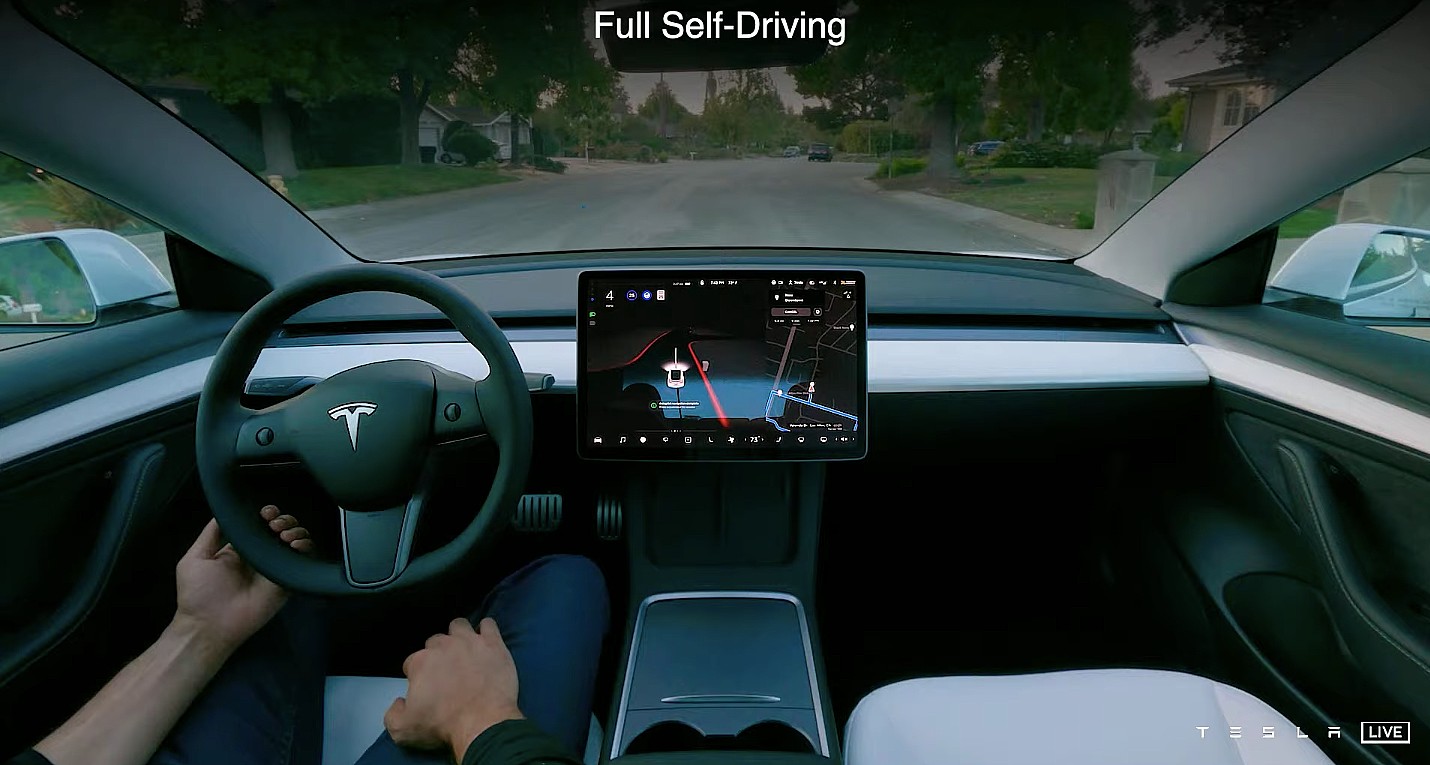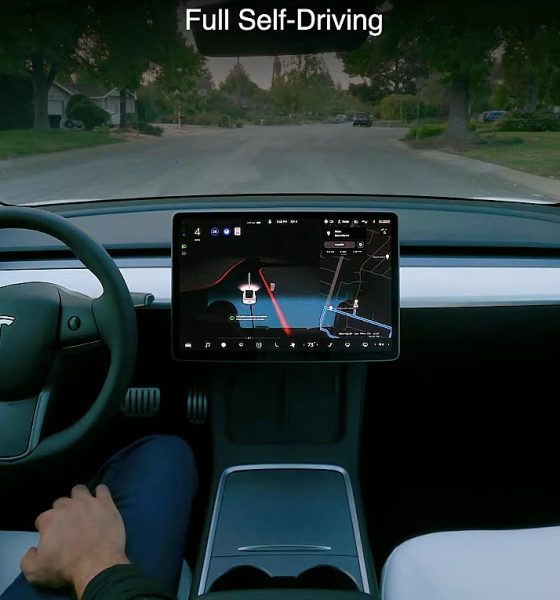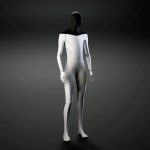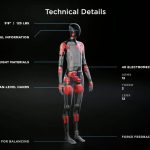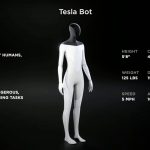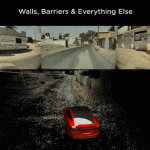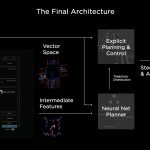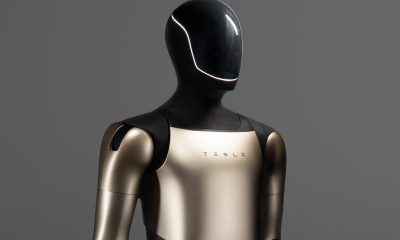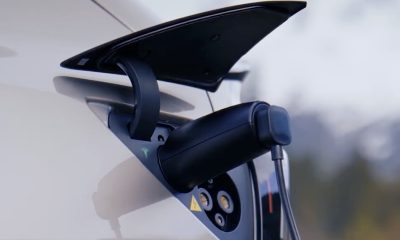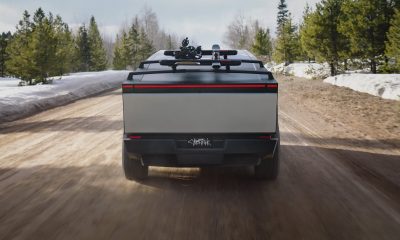Tesla’s AI Day is here. In a few minutes, Tesla watchers would be seeing executives like Elon Musk provide an in-depth discussion on the company’s AI efforts on not just its automotive business but on its energy business and beyond as well. AI Day promises to be yet another tour-de-force of technical information from the electric car manufacturer. Thus, it is no surprise that there is a lot of excitement from the EV community heading into the event.
Tesla has kept the details of AI Day behind closed doors, so the specifics of the actual event are scarce. That being said, an AI Day agenda sent to attendees indicated that they could expect to hear Elon Musk speak during a live keynote, speak with Andrej Karpathy and the rest of Tesla’s AI engineers, and participate in breakout sessions with the teams behind Tesla’s AI development.
Similar to Autonomy Day and Battery Day, Teslarati would be following along on AI Day’s discussions to provide you with an updated account of the highly-anticipated event. Please refresh this page from time to time, as notes, details, and quotes from Elon Musk’s keynote and its following discussions will be posted here.
Simon 19:40 PT – A question about the use cases for the Tesla Bot was asked. Musk notes that the Tesla Bot would start with boring, repetitive, work, or work that people would least like to do.
Simon 19:25 PT – A question about AI and manufacturing is asked and how it potentially relates to the “Alien Dreadnaught” concept. Musk notes that most of Tesla’s manufacturing today is already automated. Musk also noted that humanoid robots would be done either way, so it would be great for Tesla to do this project, and safely as well. “We’re making the pieces that would be useful for a humanoid robot, so we should probably make it. If we don’t someone else will — and we want to make sure it’s safe,” Musk said.
Simon 19:15 PT – And the Q&A starts. First question involves open-sourcing Tesla’s innovations. Musk notes that it’s pretty expensive to develop all this tech, so he’s not sure how things could be open-sourced. But if other car companies would like to license the system, that could be done.
Simon 19:11 PT – There will really be a “Tesla Bot.” It would be built by humans, for humans. It would be friendly, and it would eliminate dangerous, repetitive, boring tasks. This is still petty darn unreal. It uses the systems that are currently being developed for the company’s vehicles. “There will be profound applications for the economy,” Musk said.
Simon 19:06 PT – New products! A whole Tesla suit?! After a fun skit, Elon says the “Tesla Bot” would eventually be real.
Simon 19:00 PT – What is crazy is that Dojo is not even done. This is just what it is today. Dojo is still evolving, and it is going to be way more powerful in the future. Now, it’s Elon Musk’s turn. What’s next for Tesla beyond vehicles.
Simon 19:00 PT – Venkataramanan teases the ExaPOD. Yet another revolutionary solution from Tesla. With all this, it is evident that Tesla’s approach to autonomy is on a whole other level. It would not be surprising if it takes Wall Street and the market a few days to fully absorb what is happening here.
Simon 18:55 PT – The specs of Dojo are insane. Behind its beastly specs, it seems that Dojo’s full potential lies in the fact that all this power is being used to do one thing: to make autonomous cars possible. Dojo is a pure learning machine, with more than 500,000 training nodes being built together. Nine petaflops of compute per tile, 36 terabytes per second of off-tile bandwidth. But this is just the tip of the iceberg for Dojo.
Simon 18:50 PT – Ganesh Venkataramanan, Project Dojo’s lead, takes the stage. He states that Elon Musk wanted a super-fast training computer to train Autopilot. And thus Project Dojo was born. Dojo is a distributed compute architecture connected by network fabric. It also has a large compute plane, extremely high bandwidth with low latencies, and big networks that are partitioned and mapped, to name a few.
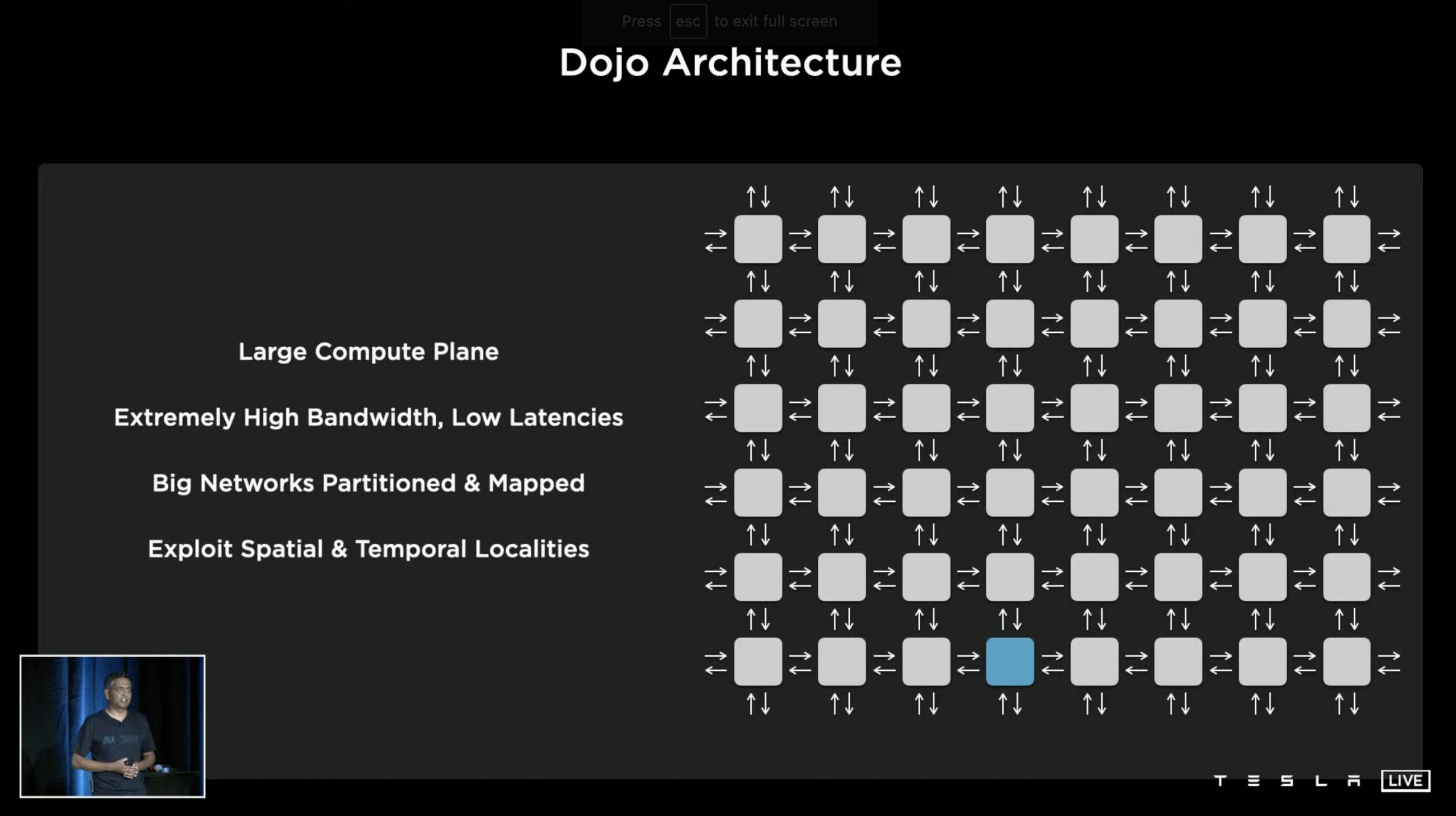
Simon 18:45 PT – Milan Kovac, Tesla’s Director of Autopilot Engineering takes the stage. He notes that he would discuss how neural networks are run in the company’s cars. He notes that Tesla’s systems require supercomputers.
Simon 18:40 PT – Ashok notes that simulations have helped Tesla a lot already. It has, for example, helped the company identify pedestrian, bicycle, and vehicle detection and kinematics. The networks in the vehicles were traded to 371 million simulated images and 480 million cuboids.
Simon 18:35 PT – Ashok notes that these strategies ultimately helped Tesla retire radar from its FSD and Autopilot suite and adopt a pure vision model. A comparison between a radar+camera system and pure vision shows just how much more refined the company’s current strategy is. The executive also touched on how simulations help Tesla develop its self-driving systems. He states that simulations help when data is difficult to source, difficult to label, or in a closed loop.
Simon 18:30 PT – Ashok returns to discuss Auto Labeling. Simply put, there is so much labeling that needs to be done that it’s impossible to be done manually. He shows how roads and other items on the road are “reconstructed” from a single car that’s driving. This effectively allowed Tesla to label data much faster, while allowing vehicles to navigate safely and accurately even when occlusions are present.
Simon 18:25 PT – Karpathy returns to talk about manual labeling. He notes that manual labeling that’s outsourced to third-party firms is not optimal. Thus, in the spirit of vertical integration, Tesla opted to establish its own labeling team. Karpathy notes that in the beginning, that Tesla was using 2D image labeling. Eventually, Tesla transitioned to 4D labeling, where the company could label in vector space. But even this was not enough, and thus, auto labeling was developed.
Simon 18:23 PT – The executive states that traffic behavior is extremely complicated, especially in several parts of the world. Ashok notes that this partly illustrated by parking lots and how they are actually complex. Summoning a car from a parking lot, for example, used to utilize 400k notes to navigate, resulting in a system whose performance left much to be desired.
Simon 18:18 PT – Ashok notes that when driving alongside other cars, Autopilot must not only think about how they would drive, they must also think about how other cars would operate. He shows a video of a Tesla navigating a road and dealing with multiple vehicles to demonstrate this point.
Simon 18:15 PT – Director of Autopilot Software Ashok Elluswamy takes the stage. He starts off by discussing some key problems in planning in both non-convex and high-dimensional action spaces. He also shows Tesla’s solution to these issues, a “Hybrid Planning System.” He demonstrates this by showing how Autopilot performs a lane change.
Simon 18:10 PT – Karpathy’s discussion notes that today, Tesla’s FSD strategy is a lot more cohesive. This is demonstrated by the fact that the company’s vehicles could effectively draw a map in real-time as it drives. This is a massive difference compared to the pre-mapped strategies employed by rivals in both the automotive and software field like Super Cruise and Waymo.
To solve several problems encountered over the last few years with the previous suite, Tesla re-engineered their NN learning from the ground up and utilized a multi-head route, camera calibrations, caching, queues, and optimizations to streamline all tasks.
(heavily simplified) pic.twitter.com/LG2TRgjxip
— Teslascope (@teslascope) August 20, 2021
Simon 18:05 PT – The AI Director discusses how Tesla practically re-engineered their neural network learning from the ground-up and utilized a multi-head route. These include camera calibrations, caching, queues, and optimizations to streamline all tasks. Do note that this is an extremely simplified iteration of Karpathy’s discussion so far.
Simon 18:00 PT – Karpathy covers more challenges that are involved in even the basics of perception. Needless to say, AI Day is quickly proving to be Tesla’s most technical event right off the bat. That said, multi-camera networks are amazing. They’re just a ton of work, but it may very well be a silver bullet for Tesla’s predictive efforts.
Simon 17:56 PT – Karpathy showcases a video of how Tesla used to process its image data in the past. He shows a popular video for FSD that has been shared in the past. He notes that while great, such a system proved to be inadequate, and this is something that Tesla learned when it launched Smart Summon. While per-camera detection is great, the vector space proves inadequate.
Simon 17:55 PT – Karpathy noted that when Tesla designs the visual cortex in its car, the company is modeling it to how a biological vision is perceived by eyes. He also touches on how Tesla’s visual processing strategies have evolved over the years, and how it is done today. The AI Director also touches on Tesla’s “HydraNets,” on account of their multi-task learning capabilities.
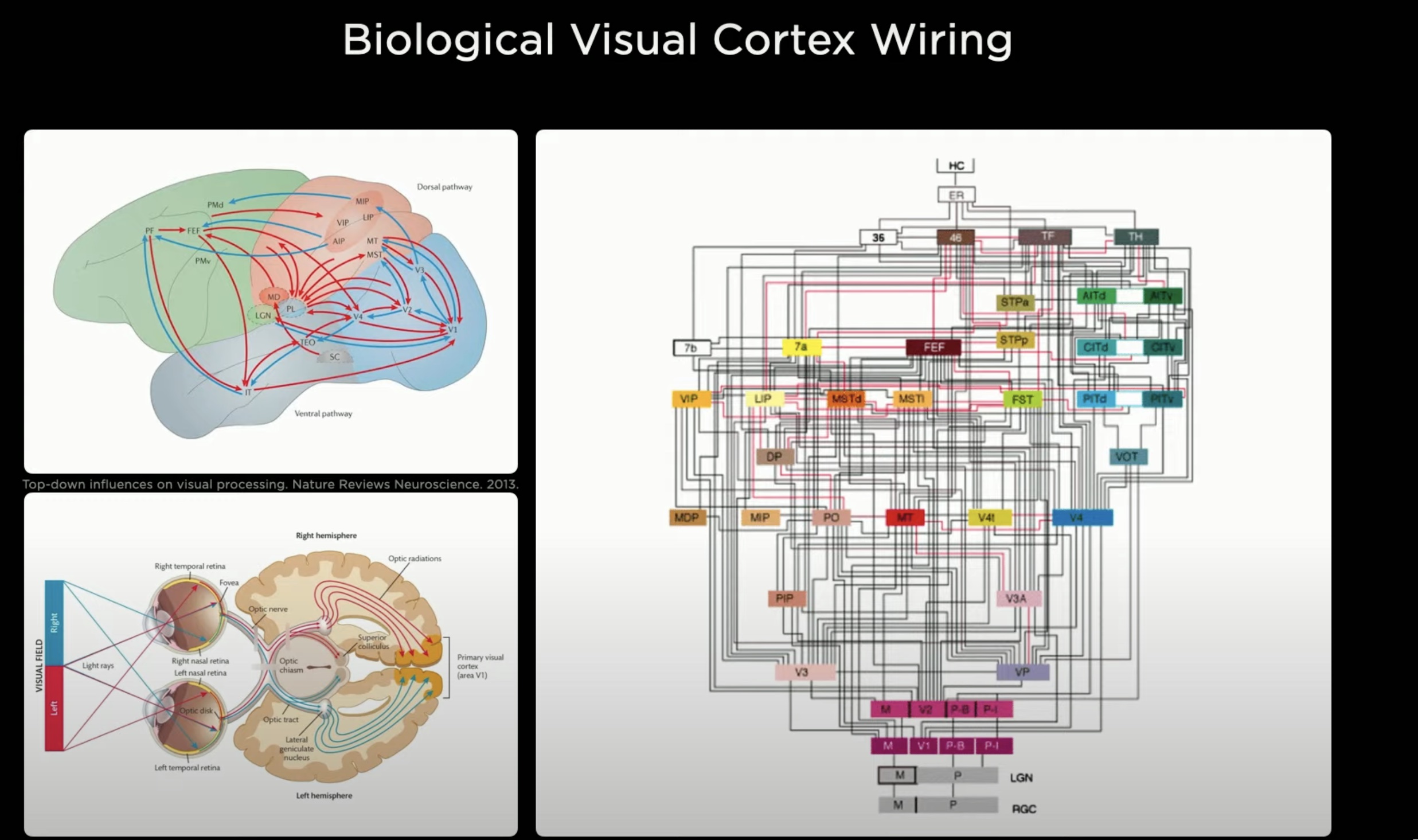
Simon 17:51 PT – Karpathy starts off by discussing the visual component of Tesla’s AI, as characterized by the eight cameras used in the company’s vehicles. The AI director notes that AI could be considered like a biological being, and it’s built from the ground up, including its synthetic visual cortex.
Simon 17:48 PT – Elon Musk takes the stage. He apologizes for the event’s delay. He jokes that Tesla probably needs AI to solve these “technical difficulties.” The CEO highlights that AI Day is a recruitment event. He calls Tesla’s head of AI Andrej Karpathy. There’s no better person to discuss AI.
Simon 17:45 PT – We’re here watching the AI Day FSD preview video and we can’t help but notice that… are those Waypoints?!
Simon 17:38 PT – Looks like we’ve got an Elon sighting! And a preview video too! Here we go, folks!
We’ve got an Elon sighting
— Rob Maurer (@TeslaPodcast) August 20, 2021
Simon 17:30 PT – A 30-minute delay. We haven’t seen this much delay in quite a bit.
Simon 17:20 PT – It’s a good thing that Tesla has great taste in music. Did Grimes mix this track?
Simon 17:15 PT – We’re 15 minutes in. “Elon Time” is going strong on AI Day. To be honest, though, this music would fit the “Rave Cave” in Giga Berlin this coming October.
Simon 17:10 PT – A good thing to keep in mind is that AI Day is a recruitment event. Some food for thought just in case the discussions take a turn for the extremely technical. AI Day is designed to attract individuals who speak Tesla’s language in its rawest form. We’re just fortunate enough to come along for the ride.
Tesla Board Member Hiro Mizuno sums it up in this tweet pretty well.
Anybody passionate about real world AI !! https://t.co/ydaWQlkE4O
— HIRO MIZUNO (@hiromichimizuno) August 20, 2021
Simon 17:05 PT – I guess AI Day is starting on “Elon Time?” We’re on to the next track of chill music.
Simon 17:00 PT – And with 5 p.m. PST here, the music is officially live on the AI Day live stream. Looks like we’re in for some wait. Wonder how many minutes it would take before it starts? Gotta love this chill music though.
Simon 16:58 PT – While waiting, I can’t help but think that a ton of TSLA bears and Wall Street would likely not understand the nuances of what Tesla would be discussing today. Will Tesla go three-for-three? It was certainly the case with Battery Day and Autonomy Day.
Made it pic.twitter.com/aAWqxgf0bP
— Johnna (@JohnnaCrider1) August 19, 2021
Simon 16:55 PT – T-minus 5 minutes. Some attendees of AI Day are now posting some photos on Twitter, but it seems like photos and videos are not allowed on the actual venue of the event. Pretty much expected, I guess.
Simon 16:50 PT – Greetings, everyone, and welcome to another Live Blog. This is Tesla’s most technical event yet, so I expect this one to go extremely in-depth on the company’s AI efforts and the technology behind it. We’re pretty excited.
Don’t hesitate to contact us with news tips. Just send a message to tips@teslarati.com to give us a heads up.
News
Tesla loses Model Y program manager in second blow in single day

Tesla has lost its Model Y Program Manager, he announced on LinkedIn, marking the second major departure from the company today.
Emmanuel Lamacchia has been in the role for 4 years and 7 months, responsible for the rollout of the all-electric crossover in several markets.
The Model Y became the best-selling vehicle in the world for two years under Lamacchia’s watch, making this a huge loss for the company. However, it seems the decision was made under Lamacchia’s own initiative.
He confirmed his decision on LinkedIn:
“After 8 incredible years, I’m moving on from Tesla.
What a journey it’s been… from leading NPI for Model 3 and Model Y variants to becoming the Vehicle Program Manager for Model Y, the best-selling car in the world!
Leading the All-New Model Y launch was the highlight: converting all 4 factories across 3 continents in just 2 weeks. Something that had never been done before in the auto industry.
To the teams who made this possible: you should be incredibly proud. This achievement belongs to you: the engineers, designers, buyers, and associates in Fremont, Shanghai, Berlin, and Austin who turned an impossible timeline into reality.
Grateful to the leaders who trusted me with programs that stretched my capabilities and to the cross-functional partners who showed me that great solutions come from collaboration, not hierarchy.
Tesla taught me how to move fast without breaking things and how to scale from prototypes to millions of units.
Excited for what’s next. More to share soon.”
It marks the second major program loss for Tesla today, as it also bid farewell to Cybertruck and Model 3 Program Manager Siddhant Awasthi, who said he left voluntarily in “one of the hardest decisions of his life.”
Lamacchia was at Tesla for just a shade under eight years, and previously worked for Rolls-Royce for roughly the same amount of time.
After the loss of both Lamacchia and Awasthi today, Tesla has lost a handful of key executives in 2025, including:
- David Imai, Director of Design
- David Lau, VP of Software Engineering
- Mark Westfall, Head of Mechanical Engineering
- Prashant Menon, Regional Director in India
- Vineet Mehta, Head of Battery Architecture
- Omead Afshar, VP/Head of Sales and Manufacturing in North America
- Milan Kovac, Head of Optimus Team
- Jenna Ferrua, Director of HR
- Troy Jones, VP of Sales, Service, and Delivery
- Pete Bannon, VP of Hardware Engineering
- Piero Landolfi, Director of Service
News
Tesla prepares to expand Giga Texas with new Optimus production plant
Drone operator Joe Tegtmeyer recognized Tesla construction crews performing ground leveling and clearing efforts at the plant earlier today.
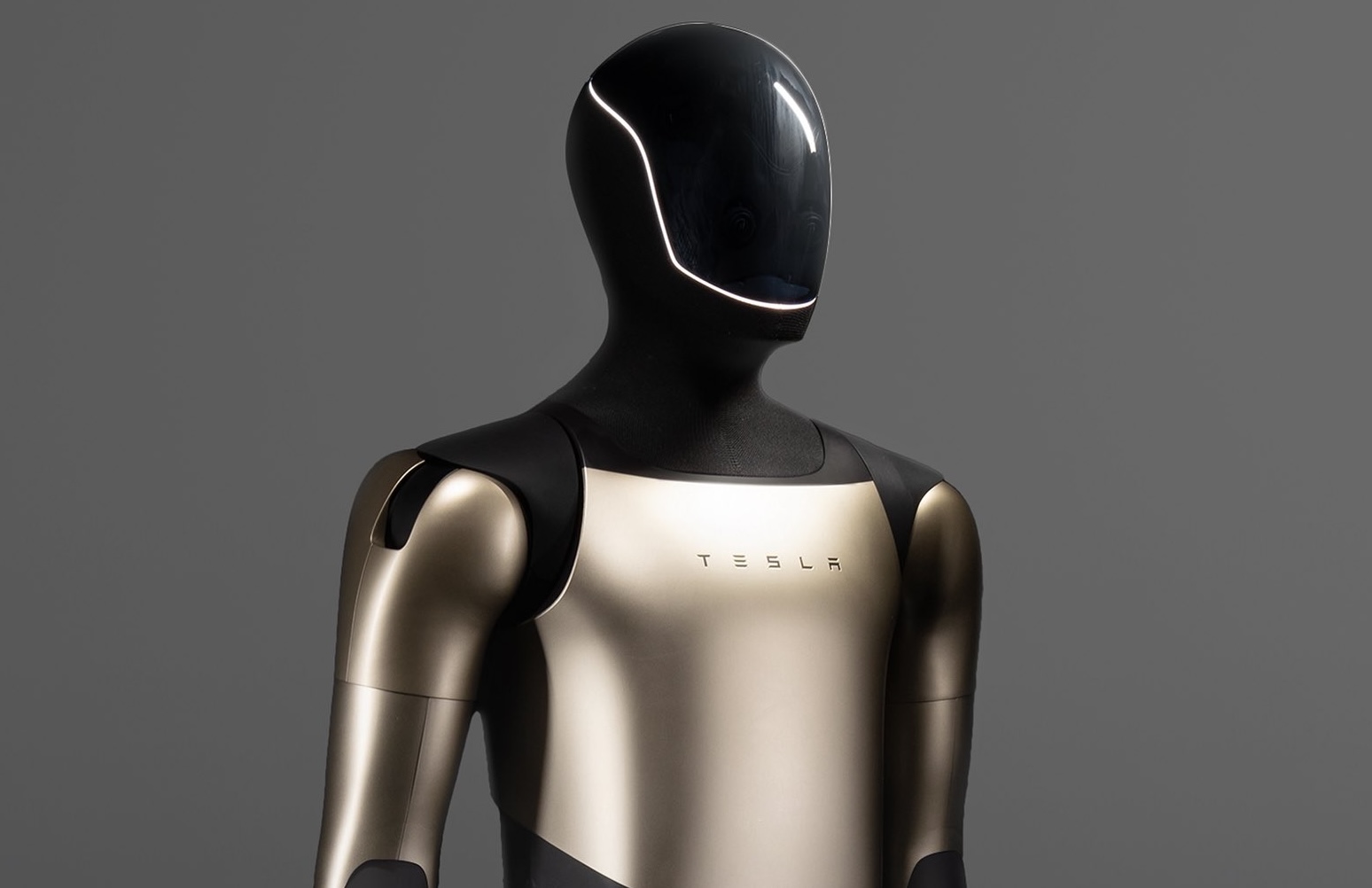
Tesla is preparing to expand Gigafactory Texas once again with a brand new facility that will house the eventual manufacturing efforts for Optimus, its humanoid robot.
It is already building some units on a Pilot line at the Fremont Factory in Northern California, but Tesla is planning to build the vast majority of its Optimus project at Gigafactory Texas.
Tesla Optimus gets its latest job, and it’s not in the company’s factories
It will build one million units per year in Fremont, but CEO Elon Musk said the company would build 10 million units every year in Texas at a new building at Giga Texas.
Musk said:
“I think there could be tens of billions of Optimus robots out there. Um, now obviously it’s very important we pay close attention to safety here. Then a 10 million unit uh per year production line here the I don’t know where we’re going to put the 100 million unit production line. on Mars. Maybe on Mars, I don’t know.”
Evidently, Tesla is ready to begin thinking about the production efforts of Optimus beyond a theoretical standpoint and is starting to prepare for the construction of the manufacturing plant on Giga Texas property.
Drone operator Joe Tegtmeyer recognized Tesla construction crews performing ground leveling and clearing efforts at the plant earlier today:
Giga Texas News!
A brand-new, stand-alone factory is starting construction! This follows the Shareholders meeting & info that a 10-million-per-year @Tesla_Optimus production facility “on the Giga Texas campus” will be built & enter into production in 2027!
Here are some… pic.twitter.com/7ig5DohfOt
— Joe Tegtmeyer 🚀 🤠🛸😎 (@JoeTegtmeyer) November 10, 2025
Production is still slated for 2027, at least at Gigafactory Texas. As previously mentioned, the company is building some units in Fremont for the time being, at least until subsequent versions of the Optimus project advance.
Tesla has done a great job of advancing Optimus forward, but it also has truly grand expectations for the project.
Musk said it could potentially be the biggest product in the history of the planet, as it will revolutionize the way humans perform tasks, probably eliminating monotonous tasks from everyday life.
News
Tesla reveals its first Semi customer after launch

Tesla revealed its first customer for the all-electric Semi truck after it launches next year. Who it truly is should not be a surprise.
The Semi is going to finally start deliveries to new companies outside of Tesla’s pilot program starting in 2026. The company has been building a dedicated production facility in Reno, Nevada, that has finally taken shape, but Tesla was evidently not finished with the Semi’s development.
Last week at the Annual Shareholder Meeting, Tesla said it had implemented some new designs into the Semi, helping with efficiency, updating its design, and making it a more suitable vehicle for hauling loads, as the changes also helped increase payload.
Tesla has obtained a lengthy list of companies that have committed to implementing the Semi in their own fleets, hoping to bring their logistics lineups up to date with electric powertrains and autonomous technologies.
While it is already operating a pilot program with PepsiCo. and Frito-Lay, Tesla will expand to other businesses, primarily using it internally after its launch.
Head of the Semi program at Tesla, Dan Priestley, said the company would be the first user of the vehicle after its launch next year. It has been using it to a certain extent, but the company has not been able to completely abandon gas haulers.
Instead, it will implement the Semi into its fleet for more sustainable vehicle logistics starting next year:
Tesla will be the first customer as we electrify our supply chain. This includes Texas operations.
— Dan Priestley (@danWpriestley) November 7, 2025
Tesla has already received orders for the Semi from a variety of large companies, including Walmart, Sysco, Anheuser-Busch, UPS, DHL, J.B. Hunt, among others.
Many analysts see the Tesla Semi as a major contributor to future growth and increasing value within the company, especially from a Wall Street perspective. Some firms say the Semi is one of several near and medium-term contributors to the company increasing its market cap.
Cantor Fitzgerald is just one of those firms, as last week it explicitly listed the Semi as a catalyst.
Analyst Andres Sheppard said, “Overall, we remain bullish on TSLA over the medium to long term. We continue to see meaningful future upside from Energy Storage & Deployment, FSD, Robotaxis/Cybercab, Semis, and Optimus Bots.”
-

 News3 days ago
News3 days agoTesla shares rare peek at Semi factory’s interior
-

 Elon Musk3 days ago
Elon Musk3 days agoTesla says texting and driving capability is coming ‘in a month or two’
-

 News2 days ago
News2 days agoTesla makes online ordering even easier
-

 News2 days ago
News2 days agoTesla Model Y Performance set for new market entrance in Q1
-

 News3 days ago
News3 days agoTesla Cybercab production starts Q2 2026, Elon Musk confirms
-

 News3 days ago
News3 days agoTesla China expecting full FSD approval in Q1 2026: Elon Musk
-

 News4 days ago
News4 days agoTesla Model Y Performance is rapidly moving toward customer deliveries
-
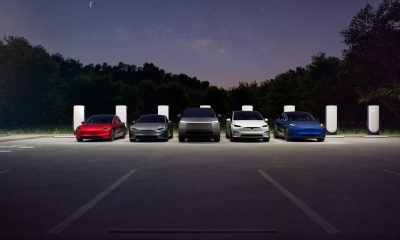
 News24 hours ago
News24 hours agoTesla is launching a crazy new Rental program with cheap daily rates

